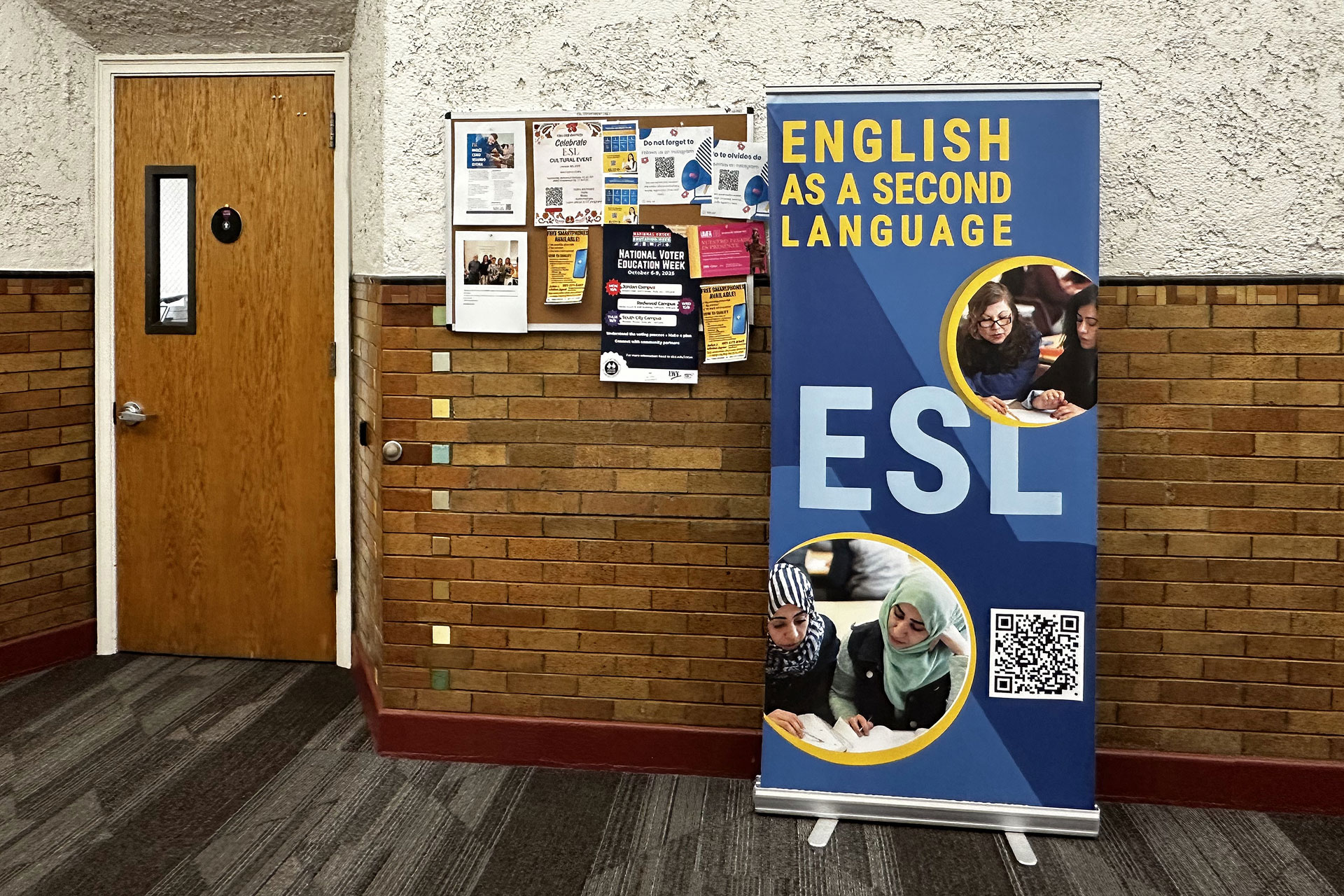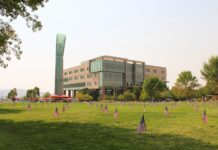
For some students, learning English is their first step to pursue a degree in the United States and build communication habits.
At Salt Lake Community College, the English as a Second Language (ESL) program supports both international and local students through a multi-level curriculum.
“Our goal is for students to learn the language and move on to the academic side and pursue their degree,” said Celia Duarte, ESL program director.
The curriculum is made up of five levels, which teach grammar, reading, writing, speaking, listening and pronunciation. In the last two years, the ESL program has updated the curriculum to reflect real-life situations, including work, academics and daily life.
Many international students come to the United States with university degrees from their home countries, with hopes to continue their studies or field of work, either in the job market or in a graduate program.
Jenny Ochoa, an international ESL student from Ecuador and a marketing and advertising technologist, shared her experience.
“I never studied English in my country because it was too expensive. The first three levels (of the ESL program) were very intense,” Ochoa said. “I learned a lot of information I did not know before; I learned how to structure tenses, verbs, and how to read and write.”
At age 51, Ochoa says studying ESL has been a rewarding experience.
Upon finishing the ESL program, students can choose to continue with a degree or pursue a technical program. However, Ochoa said paying for a regular program at SLCC is expensive because her international student status makes it mandatory for her to pay for health insurance.
As a result, Ochoa said she doesn’t see the possibility to pursue a degree due to high costs and a lack of help with the transition to a degree.
New methods
Under new Salt Lake Tech Vice President Jason Wood, the program is creating ways for ESL students to take academic or technical courses at the same time, according to Duarte.
For example, if a student wants to pursue a technical program in construction trades, the student could have the opportunity to have half of their ESL classes and the other half of the classes designed for their program.
The program also aims to offer specialized classes for multilingual students, taught by TESOL-certified instructors, such as the English 1010 class, which uses a more personalized and specialized teaching method.
Budget cuts and classes
Recent funding cuts caused ESL to cancel some classes, including level four classes. The budget reallocation went to program updates and hiring more teachers.
“For this fiscal year, for fall semester, we couldn’t offer a level four classes at South City campus and we had to cut back on some of the classes we were offering, and it caused a lot of frustration amongst our students,” Duarte said. “Classes were filling up, and students couldn’t get into the classes,” Duarte said.
However, in spring 2026, ESL will begin to offer all levels again at South City and Redwood campuses. Classes will allow seven to eight students. Early registration is important to avoid full classes.
“We’re just going to modify how we’re teaching classes. But [we’re] trying to ensure that all of our students get the classes they need,” Duarte said.
Enrolling into the ESL program
Students who want to begin their ESL journey can start by visiting the ESL office to get information about class schedules, costs and courses offered.
Once ready, students fill out a general application to enroll at SLCC. Then, within 24 hours, applicants will receive an email with their personal account and student number. This allows them to register for the Versant English Placement Test that evaluates speaking, writing, reading, and listening skills. Students are then placed at a level that fits their results.
The program aims to help students not only learn English but also prepare for technical or academic programs that can improve their careers.
Student support
ESL also helps students move to traditional college programs by working with departments to promote fields that the students want to go into, such as business, health and languages.
Tutors and the MySuccess system support students who are behind in assignments or exams by motivating students to keep studying, while helping them to succeed.
Duarte emphasizes her support for ESL students and their journey during their learning curve, which is challenging but not impossible.
“Learning English or any other language is difficult and takes time and effort. Despite the challenges, the program is here for students who want to learn and improve their lives,” Duarte said.
The ESL program hopes to receive more support from departments and leaders, which would help program students achieve better conditions and results.






